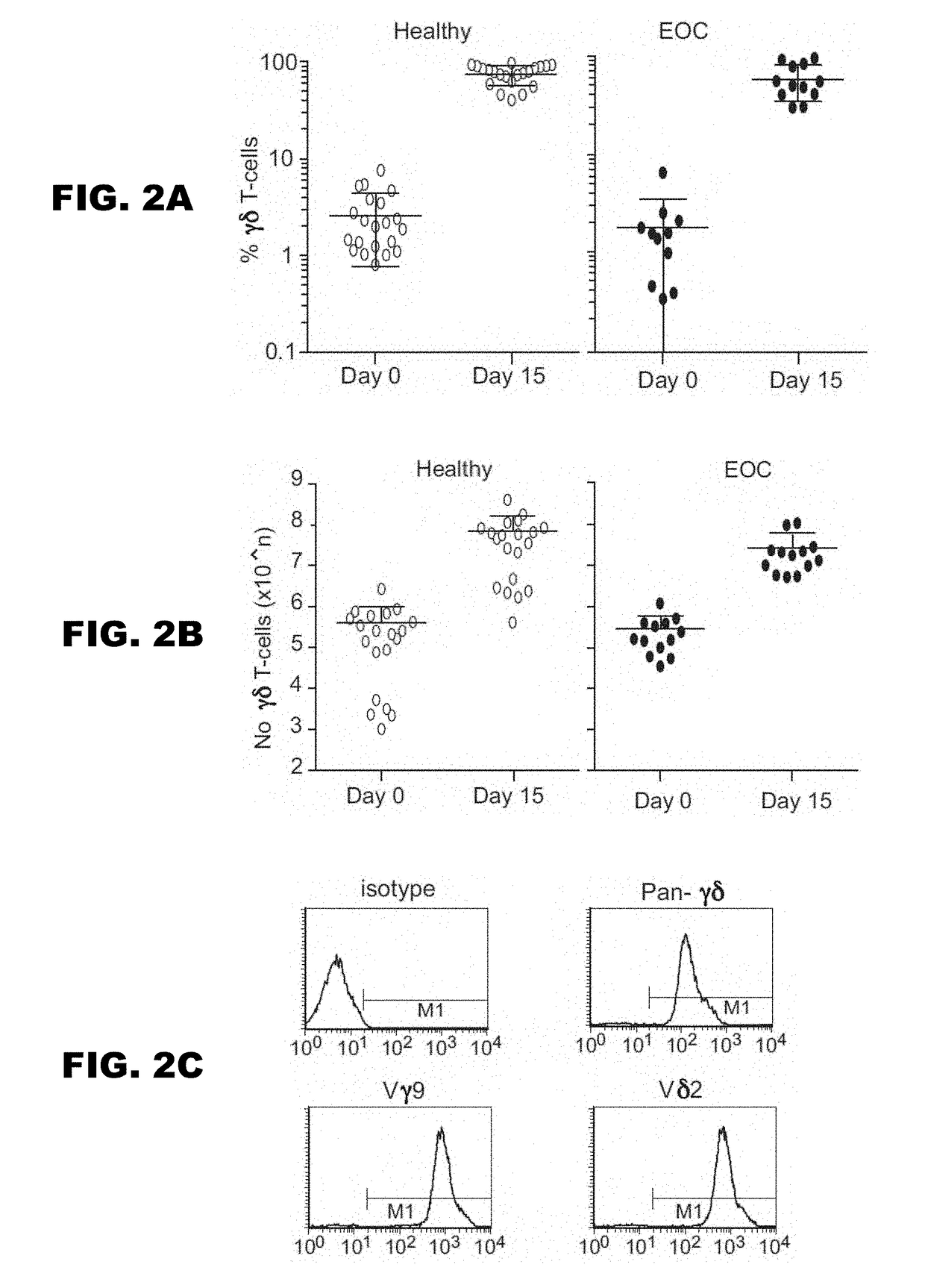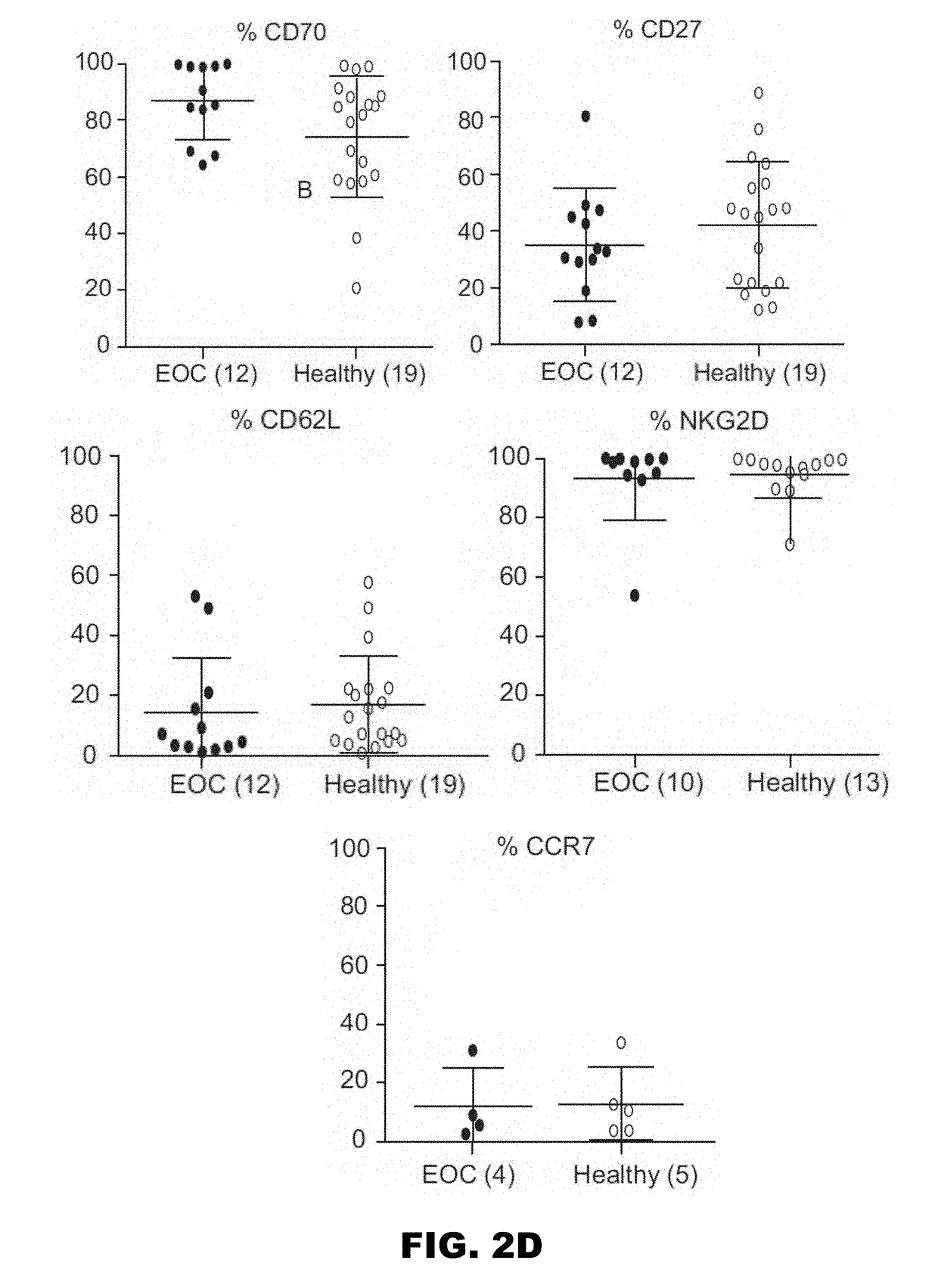Gammadelta t cell expansion procedure
a gamma-t cell and cell technology, applied in the field of gamma-t cell expansion procedure, can solve the problems of limited clinical efficacy and achieve the effect of reducing tumor burden
- Summary
- Abstract
- Description
- Claims
- Application Information
AI Technical Summary
Benefits of technology
Problems solved by technology
Method used
Image
Examples
example 1
Expansion of T-Cells in Accordance with the Invention
[0058]Next, we modified method 1 such that transforming growth factor (TGF)-β was added together with IL-2 at all times. This approach is referred to hereafter as method 2.
[0059]In a variation of the method of Example A above, blood was collected from healthy donors or patients, in a tube with citrate anticoagulant. Using Ficoll-Paque (GE), PBMCs were isolated according to previously published methodology [17].
[0060]Isolated PBMC cells were then reconstituted in GMP TexMACS Media (Miltenyi) at 3×106 cell / mL. To the reconstituted cells, 1 μg / mL Zoledronic Acid (Zometa, Novartis) was added as an activator, together with 100 U / mL IL-2 and 5 ng / mL TGF-β. The cells were incubated at 37° C. in air containing 5% carbon dioxide.
[0061]On day 3, cells were fed with 100 U / mL IL-2 and 5 ng / mL TGF-β. Thereafter, on days 4, 7, 9, 11, 13, 15, cells were counted by trypan exclusion using a hemocytometer. If the number of T-cells was less than 1×1...
example 2
Alternative Cell Expansion Process
[0070]The methodology of Example 1 above was repeated using a different basic medium, specifically RPMI+human AB serum. In particular, PBMC (3×106 cells / ml) were cultured in RPMI+10% human AB serum containing zoledronic acid (1 μg / ml)+IL-2 (100 U / ml; method 1) or zoledronic acid (1 μg / ml)+IL-2 (100 U / ml) +TGF-β (5 ng / ml; method 2). Cell number was evaluated on day 15 and the results are shown in FIG. 9A. The percentage of γδ T-cells present in each culture was evaluated on the day of initiation of the cultures (day 1) and after a further 14 days (day 15) and the results are shown in FIG. 9B.
[0071]As before, it is clear that the addition of TGF-β has enhanced cell expansion.
example 3
In-Vivo Therapeutic Activity
[0072]In addition, the in-vivo therapeutic activity of expanded Vγ9Vδ2 T-cells against an established burden of malignant disease were compared. Twenty SCID Beige mice were inoculated with 1×106 firefly luciferase-expressing U937 leukemic cells by tail vein injection and were then divided into 4 groups of 5 mice each. After 4 days, mice were treated as follows: Group 1 is a control group that received PBS alone. Group 2 received pamidronic acid (200 μg IV) alone. Group 3 received pamidronic acid (200 μg IV on day 4) followed by 20×106 (day 5) and 10×106 (day 6) Vγ9Vδ2 T-cells that had been expanded using method 1 (IV). Group 4 received pamidronic acid (200 μg IV on day 4) followed by 20×106 (day 5) and 10×106 (day 6) Vγ9Vδ2 T-cells that had been expanded using method 2 (administered IV). Leukemic burden was monitored thereafter by serial bioluminescence imaging.
[0073]The results are shown in FIG. 10. It is clear that the efficacy of the cells obtained by ...
PUM
| Property | Measurement | Unit |
|---|---|---|
| concentration | aaaaa | aaaaa |
| concentration | aaaaa | aaaaa |
| concentration | aaaaa | aaaaa |
Abstract
Description
Claims
Application Information
 Login to View More
Login to View More - R&D
- Intellectual Property
- Life Sciences
- Materials
- Tech Scout
- Unparalleled Data Quality
- Higher Quality Content
- 60% Fewer Hallucinations
Browse by: Latest US Patents, China's latest patents, Technical Efficacy Thesaurus, Application Domain, Technology Topic, Popular Technical Reports.
© 2025 PatSnap. All rights reserved.Legal|Privacy policy|Modern Slavery Act Transparency Statement|Sitemap|About US| Contact US: help@patsnap.com



